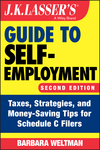Your Retirement Plans for 2011
Whether you are an employee or a self-employed person, now is the time to start thinking about funding a retirement plan in 2011. Most of the tax rules have remained unchanged from 2010, but there are a few new wrinkles.
Deciding Now on Elective Deferrals
If you currently participate in a 401(k) or similar plan, you must decide now how much of your salary you will contribute to the plan next year. The dollar limits for 2011 have not been increased over 2010 amounts, so that the maximum contribution you can make is $16,500 (or $22,000 if you will be at least 50 years old by December 31, 2011).
If you participate in a Savings Investment Match Plan for Employees of Small Employers (SIMPLE), the contribution limit for 2011 is $11,500 ($14,000 if you will be at least 50 years old by December 31, 2011).
If you participate in an automatic 401(k) plan, where your contributions are a fixed percentage of your compensation unless you choose otherwise, recognize that the percentage may increase in 2011. Decide whether you want this larger amount to be contributed; you can reduce the contribution amount or opt out entirely. However, it is advisable to contribute to the plan as much as you can and at least as much as is necessary to obtain any employer matching contribution.
Deciding on Retirement Plans
If you are self-employed, now is the time to be thinking about retirement plans-for 2010 as well as for 2011. You have until December 31, 2010, to set up a qualified retirement plan, such as a profit-sharing plan or a defined benefit (pension) plan, for 2010. (It’s too late to set up a SIMPLE plan for 2010; the deadline was October 1, 2010.)
Setting up the 2010 before the end of the year gives you until the due date of your 2010 income tax return, including extensions, to fund the plan. If you fail to set up a plan before the close of this year, you still have until the extended due date of the 2010 return to set up and fund a Simplified Employee Pension (SEP) plan.
And you should be thinking about the type of plan you’ll want to use for 2011 if you don’t have any plan for 2010 and decide that it’s time to have a plan for your business.
Here are some plan limits to consider (the amounts are the same for 2010 and 2011):
- Maximum contribution to a defined contribution plan, such as a SEP: $49,000
- Maximum benefit under a defined benefit (pension) plan: $195,000
- Maximum amount of compensation taken into account in figuring contributions and benefits: $245,000
IRAs
The contribution limit for traditional and Roth IRAs is $5,000 in 2010 and 2011, plus an additional $1,000 for those age 50 or older by the end of the year. However, there are some limits for certain contributors.
- Traditional IRAs. Contributions to traditional IRAs can be made by those who participate in company retirement plans only if modified adjusted gross income (MAGI) does not exceed set amounts. A full contribution is allowed as long as MAGI for single filers does not exceed $56,000 in 2010 and 2011; for joint filers MAGI cannot exceed $89,000 in 2010 and $90,000 in 2011. If one spouse is an active participant, the other spouse can make a deductible IRA contribution if the couple’s MAGI does not exceed $167,000 in 2010 and $169,000 in 2011. If MAGI exceeds these limits, the IRA contribution amount is phased out.
- Roth IRAs. Contributions to Roth IRAs are allowed only if MAGI does not exceed set amounts. A full contribution is allowed for single filers with MAGI not exceeding $105,000 in 2010 and $107,000 in 2011. For joint filers, MAGI limit is $167,000 in 2010 and $169,000 in 2011. If MAGI exceeds these limits, the Roth IRA contribution amount is phased out.
Conclusion
Retirement plans are a way to build up retirement income on a tax-advantaged basis. Elective deferrals (salary reduction contributions) by employees are not taxable; employees are not taxed at the time employers make contributions on their behalf. Self-employed individuals can deduct contributions to qualified retirement plans. The sooner you start to review your retirement plan options and take steps to maximize your retirement savings to the extent that you can do this financially, the greater your retirement income will be.



